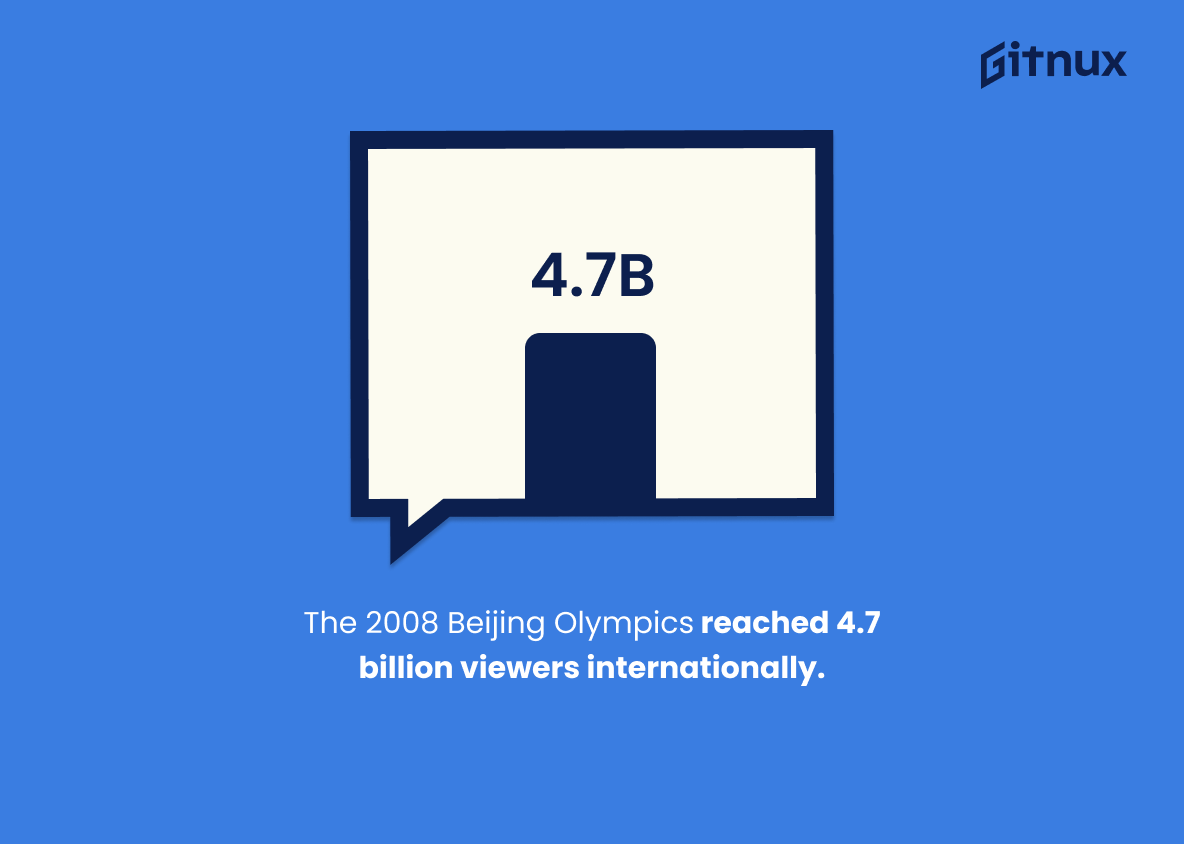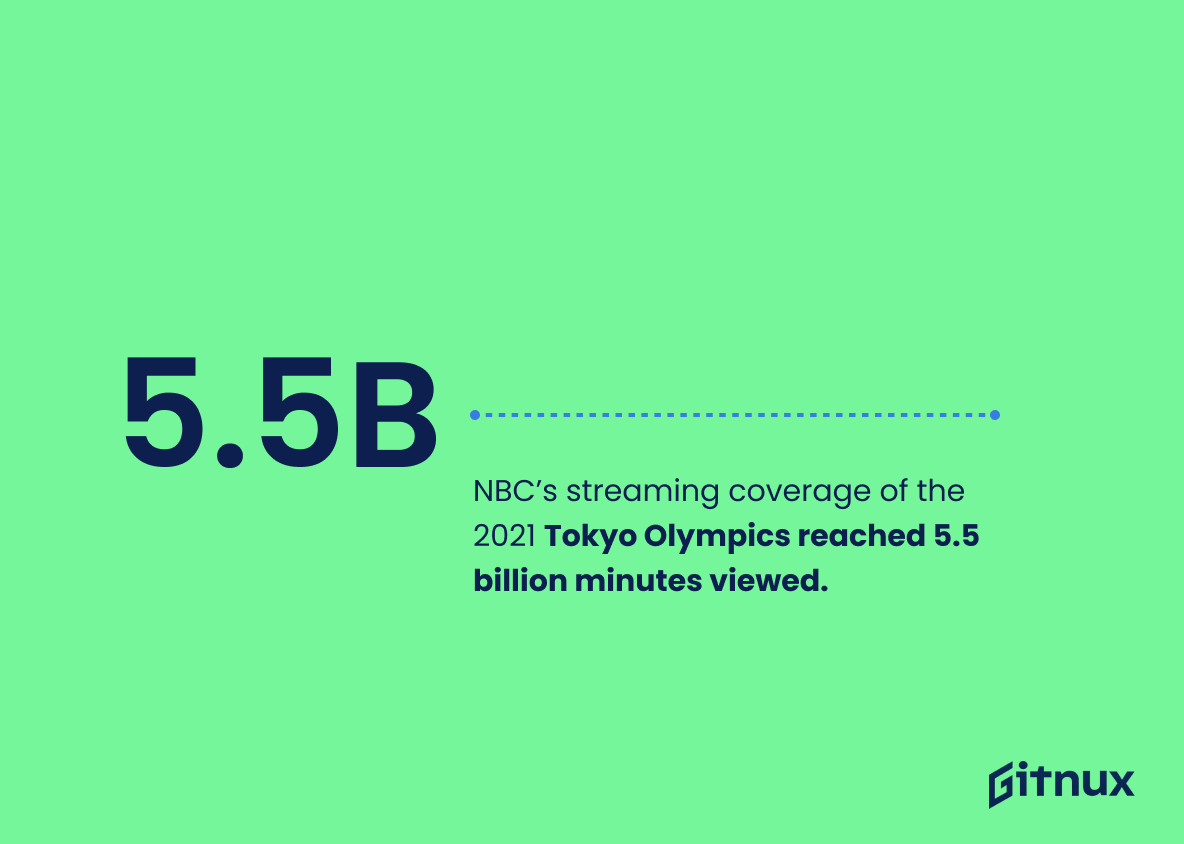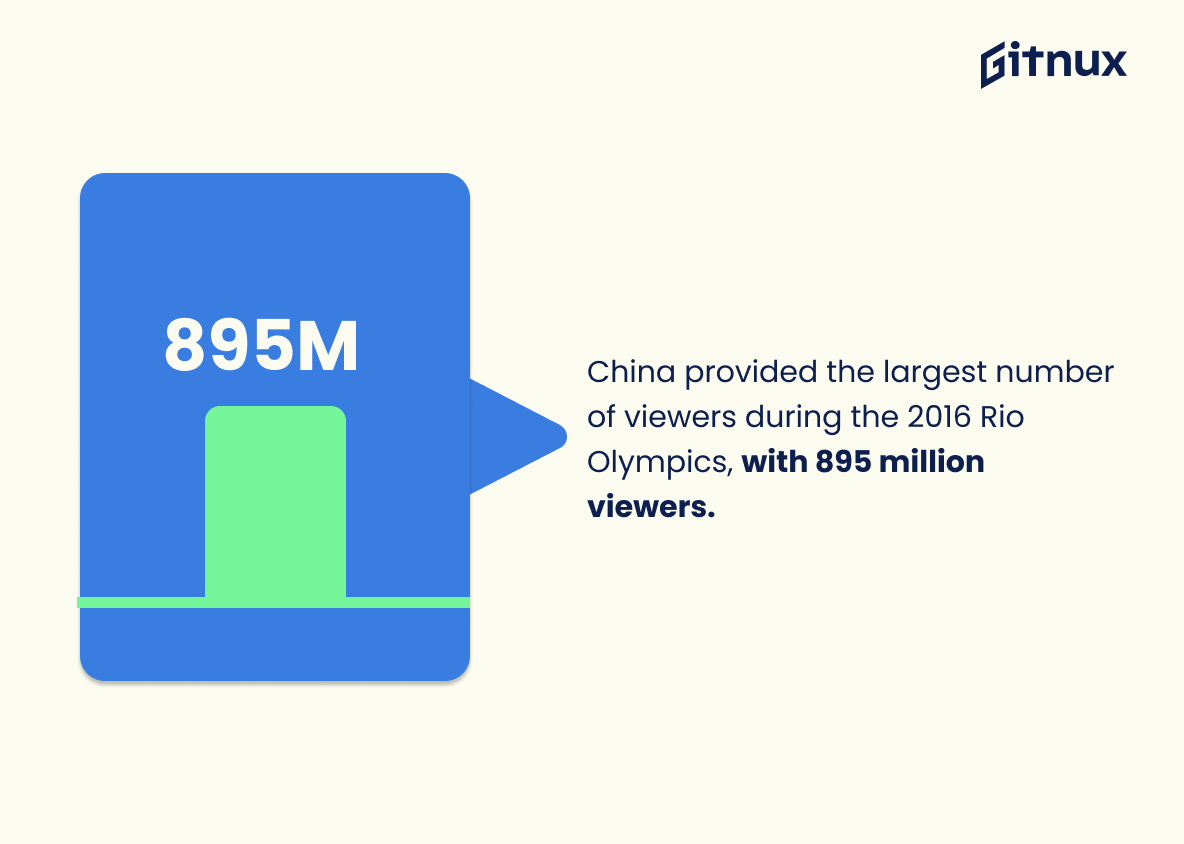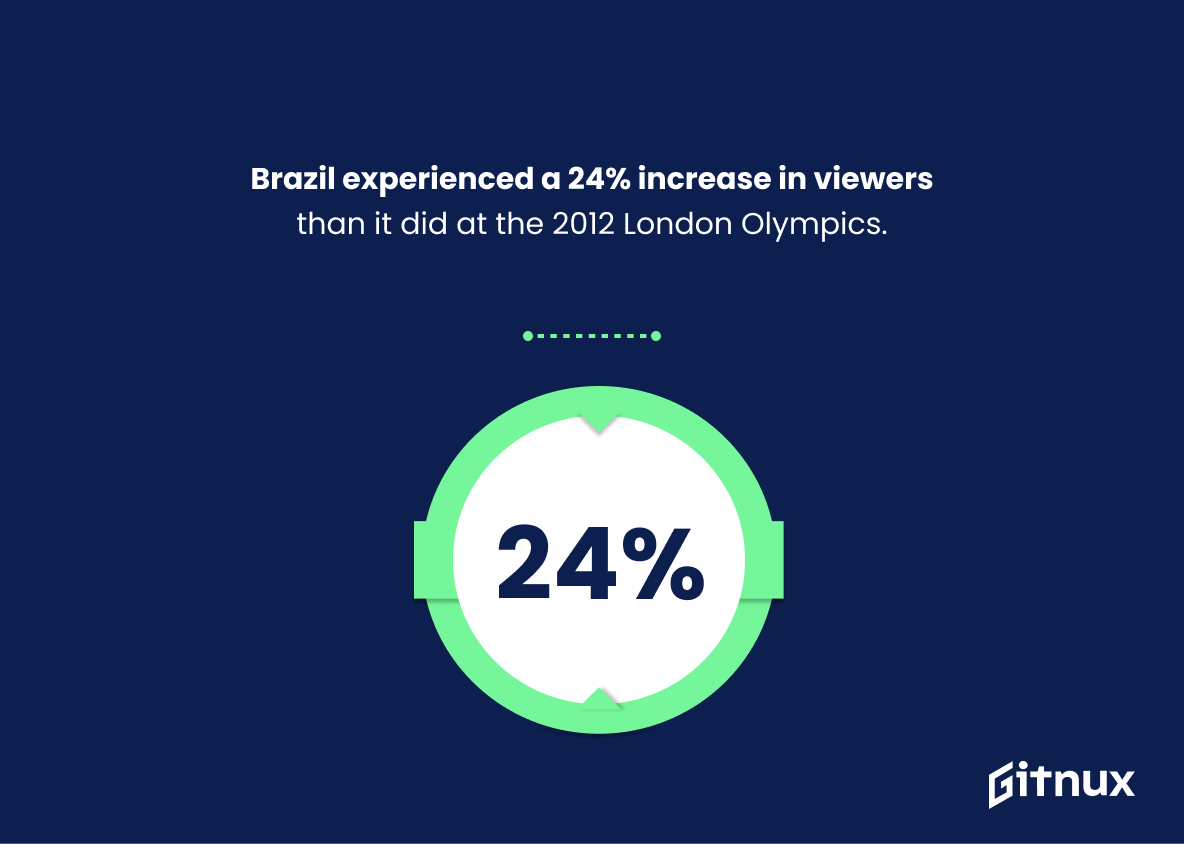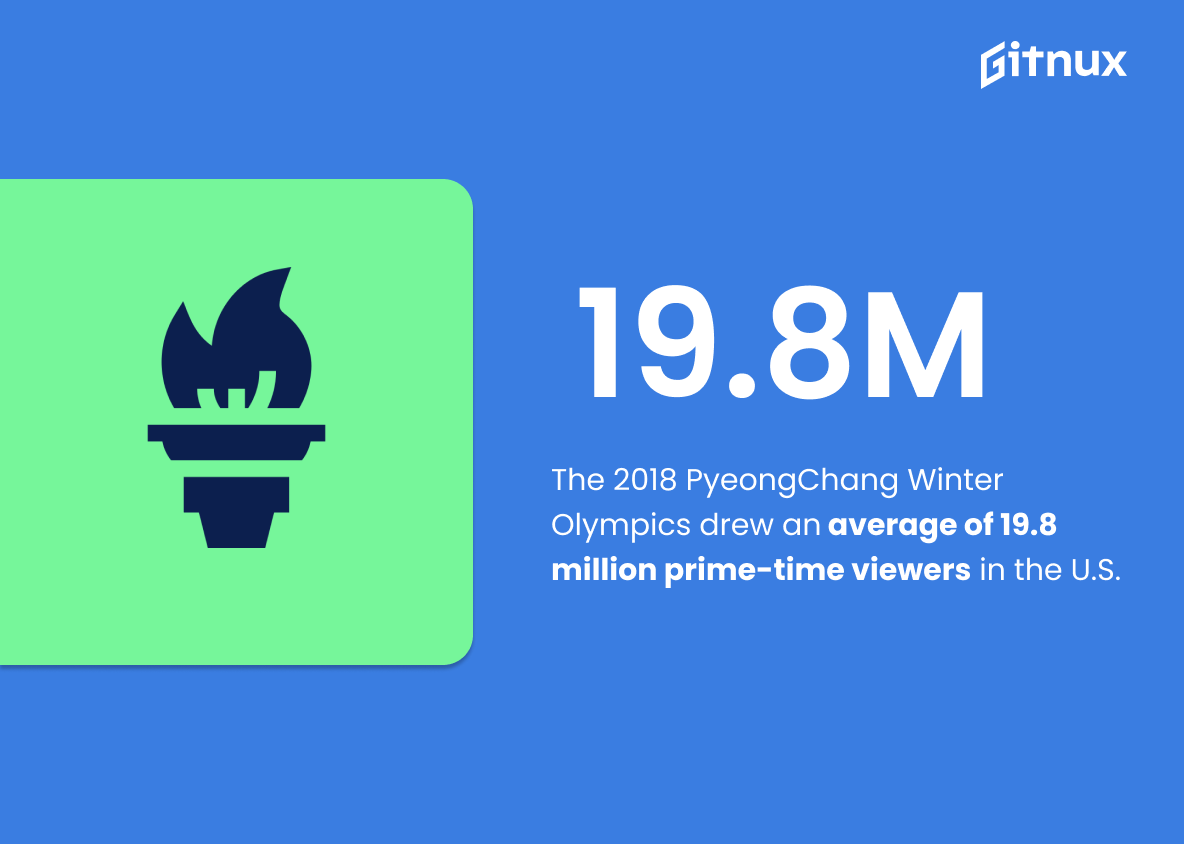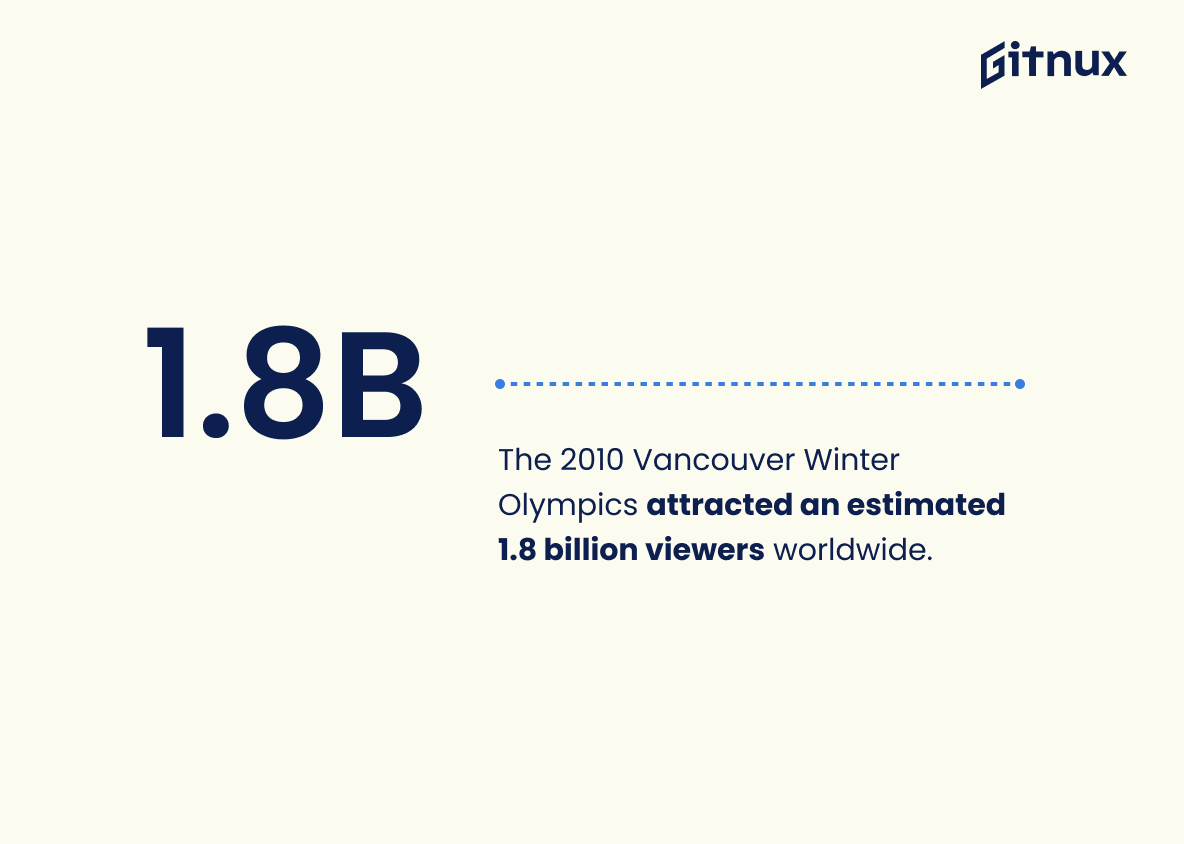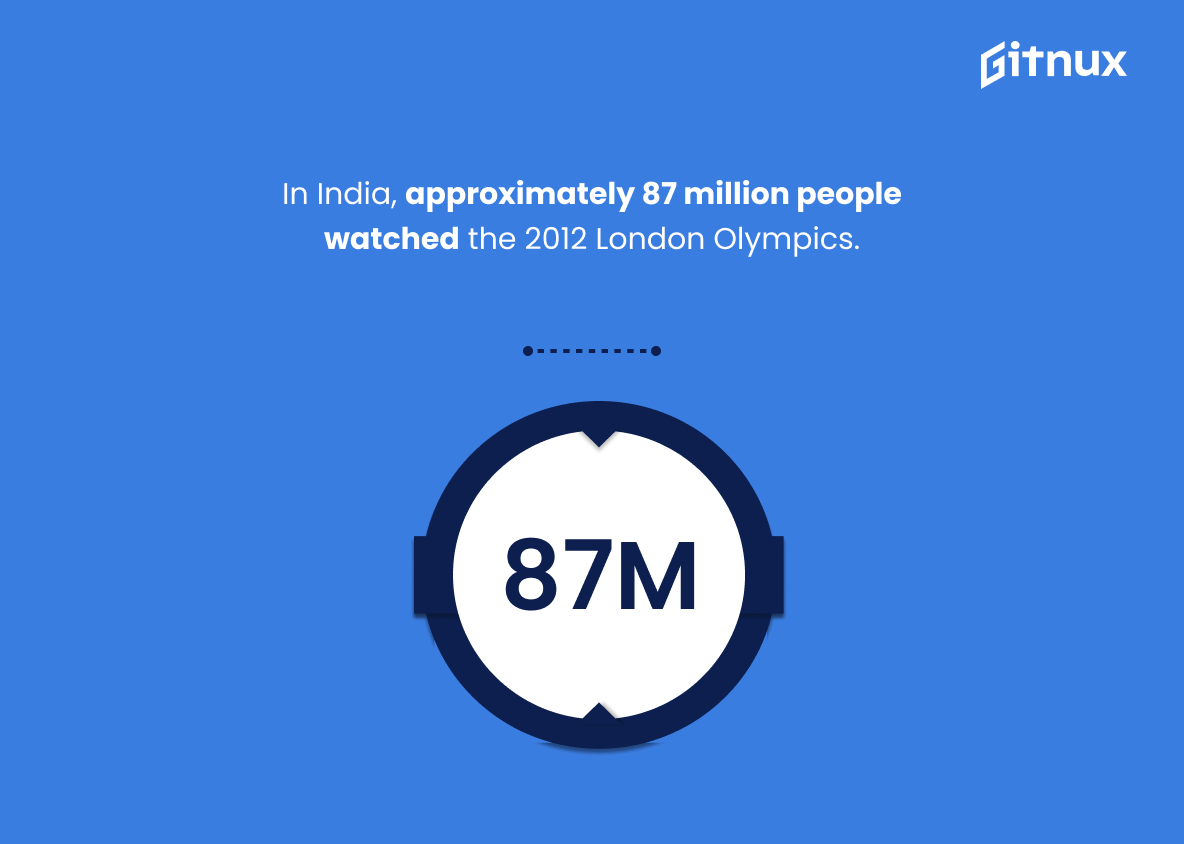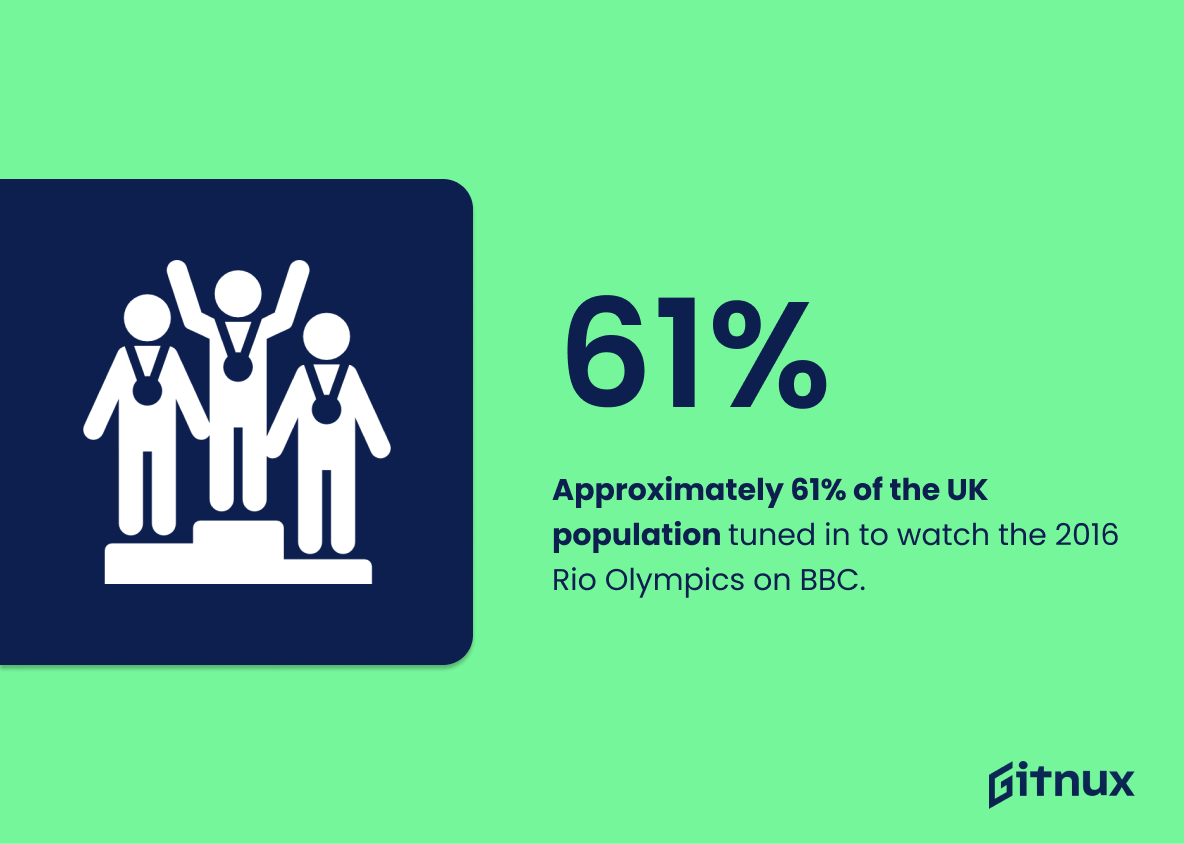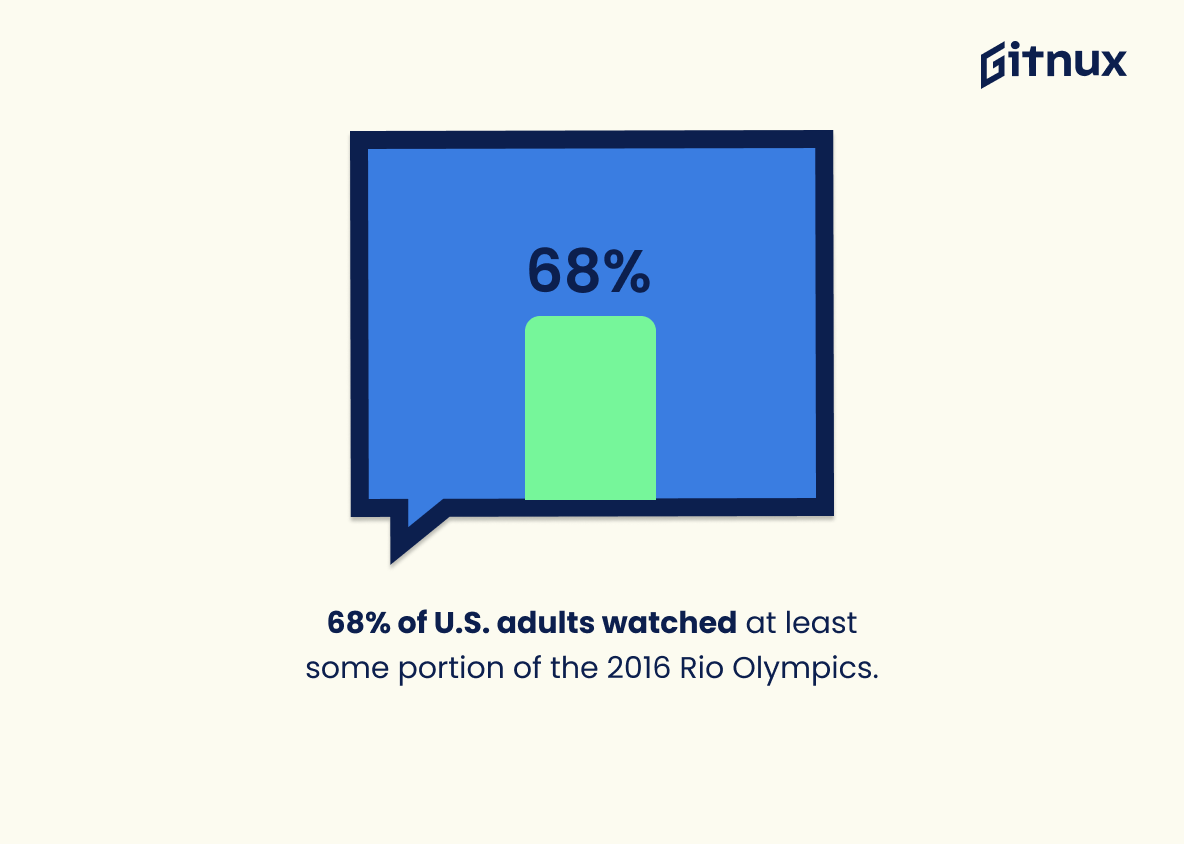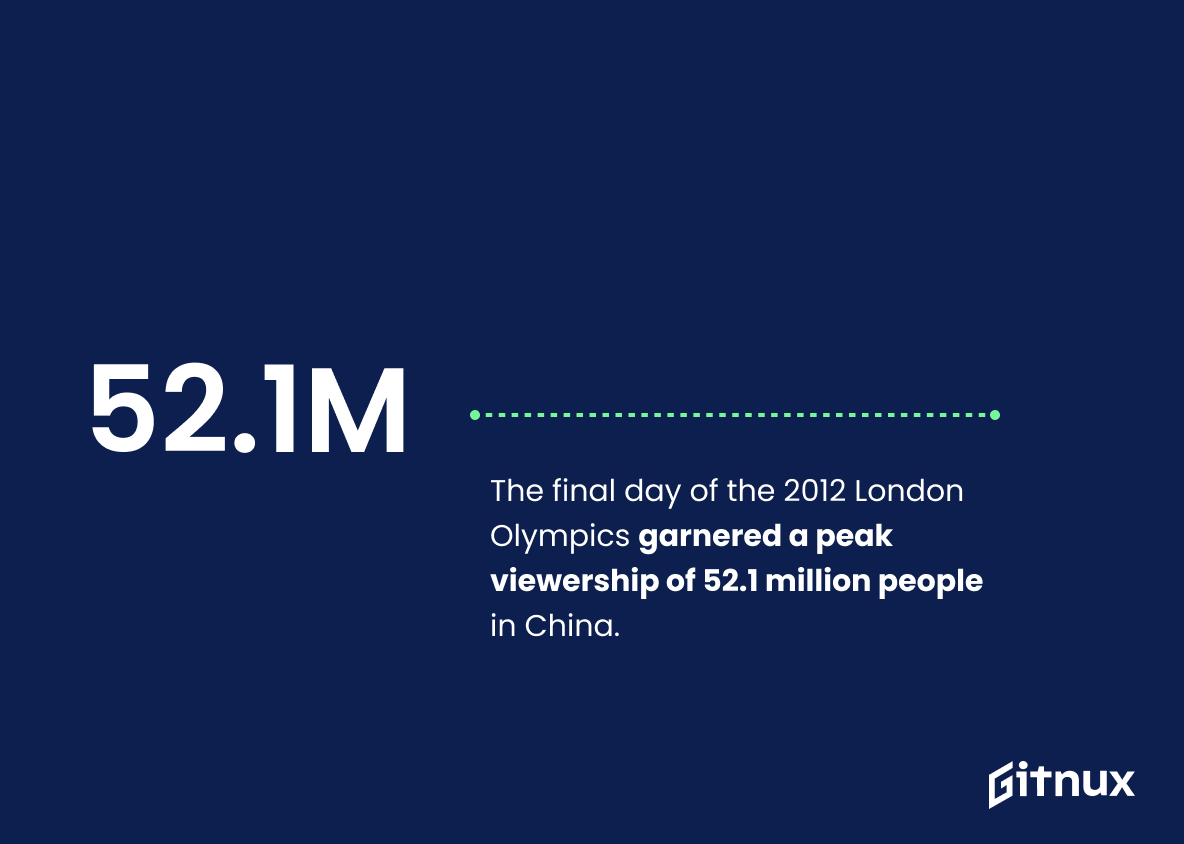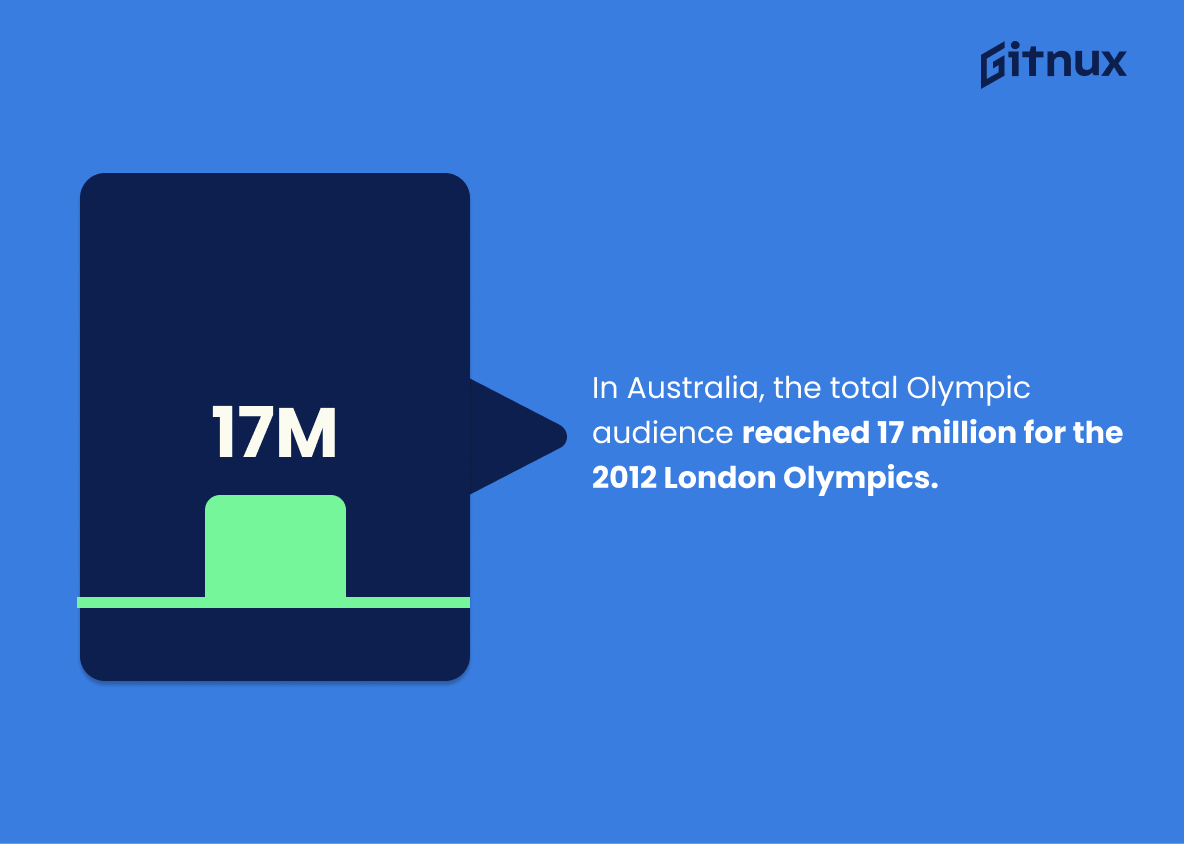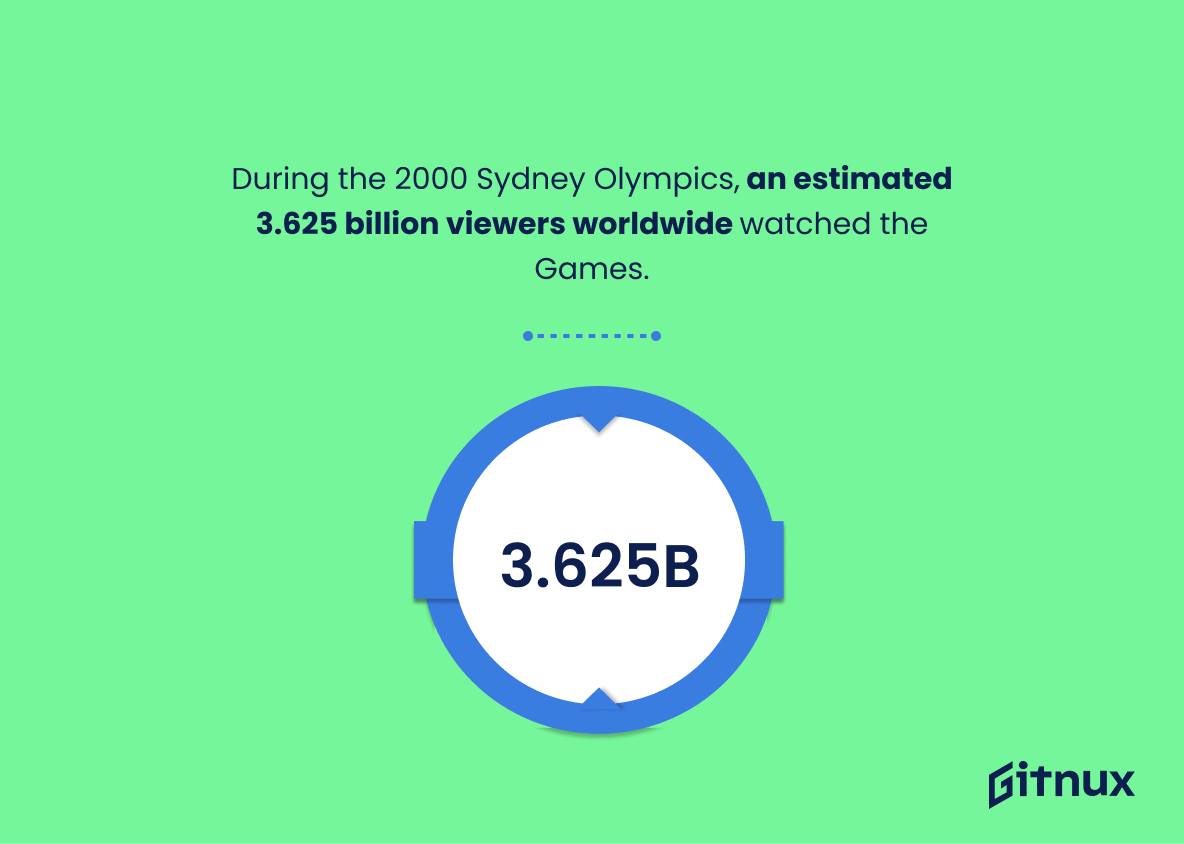The Olympic Games have been a source of entertainment and inspiration for people around the world since their inception in 776 BC. From ancient Greece to modern-day Tokyo, viewers from all corners of the globe tune in to watch athletes compete at the highest level. In this blog post, we will explore some interesting statistics about Olympics viewership over time. We’ll look at how many people watched each edition of the Games, where they were located geographically, and what kind of impact these events had on television audiences worldwide. So let’s dive into it.
This statistic is a testament to the immense popularity of the 2021 Tokyo Olympics, demonstrating that the event was able to capture the attention of an average of 15.5 million viewers in primetime coverage in the U.S. alone. It is a clear indication that the Olympics remain a major draw for viewers, and that the event continues to be a major source of entertainment for millions of people.
The 2016 Rio Olympics reached an estimated 3.6 billion global television viewers.
This statistic is a testament to the immense reach of the 2016 Rio Olympics. It is a remarkable figure that speaks to the power of the Olympic Games to captivate audiences around the world. It is a clear indication that the Olympics remain one of the most popular sporting events in the world, and that its viewership continues to grow.
Olympics Viewership Statistics Overview
The 2012 London Olympics were watched by 3.64 billion viewers worldwide.
This statistic is a testament to the immense reach of the 2012 London Olympics. It is a remarkable figure that speaks to the power of the Olympic Games to bring people together from all corners of the globe. It is a reminder of the unifying power of sports and the ability of the Olympics to captivate audiences from all walks of life.
The 2008 Beijing Olympics reached 4.7 billion viewers internationally.
This statistic is a testament to the immense reach of the 2008 Beijing Olympics. It is a remarkable figure that speaks to the power of the Olympic Games to bring people from all over the world together in celebration of sport and competition. It is a reminder of the global impact of the Olympics and the importance of the event in the world today.
NBC’s streaming coverage of the 2021 Tokyo Olympics reached 5.5 billion minutes viewed.
The sheer magnitude of NBC’s streaming coverage of the 2021 Tokyo Olympics reaching 5.5 billion minutes viewed is a testament to the immense popularity of the Olympic Games. This statistic is a clear indication that the Olympics continues to captivate audiences around the world, and that the Olympic spirit is alive and well.
China provided the largest number of viewers during the 2016 Rio Olympics, with 895 million viewers watching 1,107 hours of content.
The sheer magnitude of China’s viewership during the 2016 Rio Olympics is a testament to the power of the Olympic Games. With 895 million viewers tuning in to watch 1,107 hours of content, it’s clear that the Olympics have a strong hold on the Chinese population. This is a remarkable feat, and one that should not be overlooked.
Brazil experienced a 24% increase in viewers than it did at the 2012 London Olympics, representing 212 million viewers in total for the 2016 Rio Olympics.
This statistic is a testament to the success of the 2016 Rio Olympics, demonstrating that the event was able to draw in a larger audience than the previous Olympics in London. It is a clear indication that the Olympics are still a popular event, and that the Rio Olympics was able to capture the attention of a large number of viewers. This statistic is important to consider when discussing Olympics viewership statistics, as it shows that the Olympics are still a major event that can draw in a large audience.
The 2018 PyeongChang Winter Olympics drew an average of 19.8 million prime-time viewers in the U.S.
This statistic is a testament to the immense popularity of the 2018 PyeongChang Winter Olympics, with an average of 19.8 million prime-time viewers in the U.S. alone. It speaks to the power of the Olympic Games to captivate and inspire viewers around the world, and serves as a reminder of the importance of the Olympic spirit.
The 2014 Sochi Winter Olympics recorded a viewership of 2.1 billion people worldwide.
This statistic is a testament to the immense popularity of the 2014 Sochi Winter Olympics. It demonstrates the sheer magnitude of people who tuned in to watch the games, making it one of the most widely viewed events in history. This statistic is a powerful reminder of the global reach of the Olympics and its ability to bring people together from all corners of the world.
The 2010 Vancouver Winter Olympics attracted an estimated 1.8 billion viewers worldwide.
This statistic is a testament to the immense reach of the 2010 Vancouver Winter Olympics. It demonstrates the sheer magnitude of the event, with an estimated 1.8 billion viewers tuning in from around the world. This figure is a powerful reminder of the global impact of the Olympics and the immense popularity of the event.
In Canada, 31.9 million people, or 90% of the population, watched the live broadcast of the 2010 Vancouver Olympics’ opening ceremony.
This statistic is a testament to the immense popularity of the 2010 Vancouver Olympics. It demonstrates that the majority of Canadians were captivated by the event, tuning in to watch the opening ceremony live. This statistic is significant in the context of a blog post about Olympics Viewership Statistics, as it highlights the immense reach of the Olympics and the power it has to bring people together.
In India, approximately 87 million people watched the 2012 London Olympics.
This statistic is a testament to the immense popularity of the Olympics in India. It shows that the 2012 London Olympics was a major event for the country, with millions of people tuning in to watch the games. This statistic is also indicative of the growing interest in the Olympics in India, which is likely to continue in the future.
About 35 million British viewers tuned in to watch the 2016 Rio Olympics on BBC, representing 61% of the UK population.
This statistic is a testament to the immense popularity of the 2016 Rio Olympics in the UK. It shows that the majority of the population was captivated by the event, with a staggering 61% tuning in to watch the games on BBC. This is a remarkable achievement and speaks to the power of the Olympics to bring people together.
68% of U.S. adults watched at least some portion of the 2016 Rio Olympics.
This statistic is a testament to the power of the Olympics to capture the attention of the American public. It shows that the 2016 Rio Olympics were able to draw in a large portion of the population, demonstrating the event’s ability to bring people together and create a shared experience.
The final day of the 2012 London Olympics garnered a peak viewership of 52.1 million people in China.
This statistic is a testament to the immense popularity of the 2012 London Olympics in China. It demonstrates the sheer magnitude of the Chinese audience that tuned in to watch the final day of the Olympics, highlighting the significance of the event in the country. This statistic is a powerful reminder of the impact the Olympics had on the Chinese population and serves as a reminder of the importance of the event in the global context.
In Australia, the total Olympic audience reached 17 million for the 2012 London Olympics.
This statistic is a testament to the immense popularity of the 2012 London Olympics in Australia. It shows that the Olympic Games were able to capture the attention of a large portion of the population, demonstrating the power of the Olympic brand and the enthusiasm of Australians for the Games.
During the 2000 Sydney Olympics, an estimated 3.625 billion viewers worldwide watched the Games.
The sheer magnitude of the 3.625 billion viewers worldwide who tuned in to watch the 2000 Sydney Olympics is a testament to the power of the Olympic Games. It is a remarkable figure that speaks to the global reach of the Olympics and its ability to captivate audiences from all corners of the world.
The 2006 Turin Winter Olympics were watched by over 2 billion television viewers.
This statistic is a testament to the immense popularity of the 2006 Turin Winter Olympics. It demonstrates the sheer magnitude of the event’s reach, with over two billion people tuning in to watch the games. This is a remarkable figure, and it serves as a reminder of the power of the Olympic Games to bring people together from all corners of the globe.
At the 2004 Athens Olympics, a cumulative global television audience of over 3.9 billion viewers was observed.
This statistic is a testament to the immense reach of the 2004 Athens Olympics. It is a powerful reminder of the sheer magnitude of the event, and how it captivated the attention of billions of viewers around the world. It is a remarkable achievement that speaks to the power of the Olympic Games and its ability to bring people together.
The 1996 Atlanta Olympic Games achieved a cumulative global television audience of 19.2 billion people.
This statistic is a testament to the immense reach of the 1996 Atlanta Olympic Games. It is a remarkable figure that demonstrates the power of the Olympics to captivate audiences around the world. This statistic is a reminder of the incredible impact the Olympics can have on global viewership and the potential for the Games to bring people together.
Conclusion
The 2021 Tokyo Olympics saw an average of 15.5 million viewers in primetime coverage in the U.S., while the 2016 Rio Olympics reached an estimated 3.6 billion global television viewers and the 2012 London Olympics were watched by 3.64 billion viewers worldwide, with China providing the largest number of viewers during this event at 895 million people watching 1,107 hours of content. The 2008 Beijing Olympics reached 4.7 billion international viewers and NBC’s streaming coverage for these Games achieved 5.5 billion minutes viewed globally; Brazil experienced a 24% increase from its viewership at the 2012 London Olympic Games to 212 million total views for Rio 2016, while 2018 PyeongChang Winter Olympic drew 19.8 million prime-time American watchers on average and 2.1 billion people worldwide tuned into Sochi 2014’s broadcasted events – 1/3rd less than Vancouver 2010 which attracted approximately 1 .8billion spectators internationally – Canada had 90% population tuning into their home country’s opening ceremony that year (31 .9million). India reported 87million individuals viewing London 2012 whilst 35m British citizens represented 61 %of UK population who followed Rio2016 via BBC channeling; 68 % US adults observed some portion of those games as well whereas 52 .1 peak Chinese audience was recorded on final day plus 17 m Australians witnessed it all too. Athens 2004 registered over 3 .9bn cumulative TV followers & Turin 2006 exceeded 2 bn mark but Atlanta 1996 topped them both with staggering 19 .2bn figure.
References
0. – https://www.cbc.ca
1. – https://www.thewrap.com
2. – https://www.pewresearch.org
3. – https://www..weforum.org
4. – https://www.sportsvideo.org
5. – https://www.forbes.com
6. – https://www.independent.co.uk
7. – https://www.olympic.org
8. – https://www.insidethegames.biz
9. – https://www.warc.com
10. – https://www.bbc.com
11. – https://www.kantanmt.com
12. – https://www.infobae.com
13. – https://www.sportcal.com
14. – https://www.variety.com
15. – https://www.bandt.com.au

